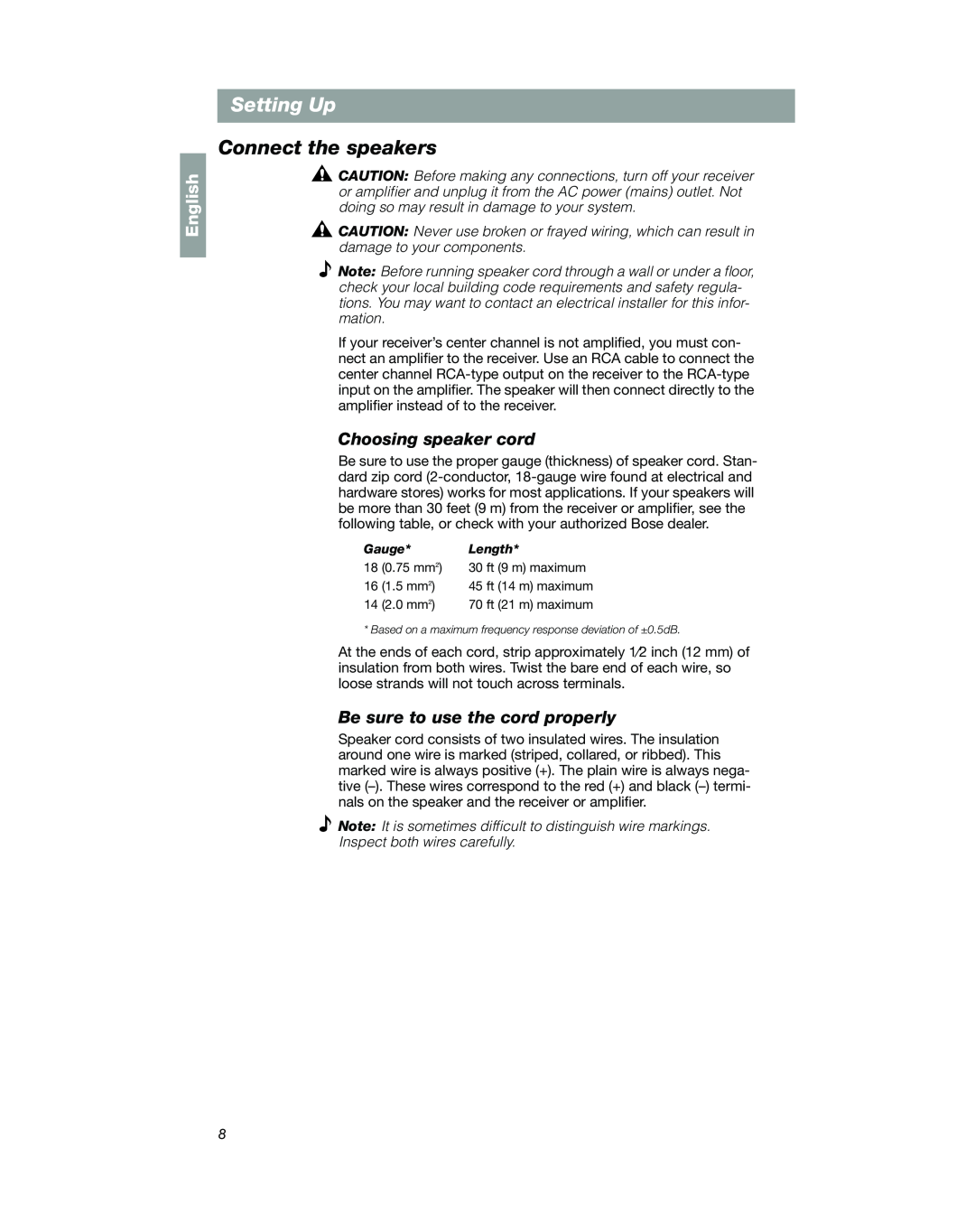VCS-10 specifications
The Bose VCS-10 and VCS-30 are premium ceiling-mounted loudspeakers designed for commercial environments, delivering exemplary audio performance and sophisticated technology suited for applications ranging from corporate meeting rooms to retail spaces. These models are known for their high-quality sound reproduction, versatility, and ease of installation.The VCS-10 is a two-way loudspeaker featuring Bose's patented Articulated Array technology. This technology enables the VCS-10 to deliver an even distribution of sound across a wide listening area, minimizing dead zones and ensuring that every listener enjoys a clear and consistent audio experience. The speaker incorporates a high-performance woofer and tweeter, allowing for rich bass and crisp highs that enhance voice clarity and ambient music.
The VCS-30, on the other hand, is an enhanced version offering a more robust sound performance. It features a larger woofer for deeper bass response and an increased power handling capability. This makes the VCS-30 ideal for larger spaces where a more powerful audio presence is required. Both models are engineered to provide a wide frequency response, making them suitable for a variety of audio content, from spoken word to complex musical compositions.
One of the standout characteristics of both the VCS-10 and VCS-30 is their sleek, low-profile design. The compact, unobtrusive appearance allows them to blend seamlessly into any architectural setting, making them ideal for professional environments where aesthetics are crucial. Their installation is facilitated by a dedicated mounting system that simplifies the process while ensuring secure placement.
In terms of connectivity and compatibility, both models support standard audio distribution systems, making them easy to integrate into existing setups. They are designed to work seamlessly with Bose’s Commercial Signal Processing products, enhancing their capabilities while providing intuitive control for sound management.
Durability is another significant feature, as both speakers are constructed with high-quality materials designed to withstand the rigors of commercial environments. Their weather-resistant design also makes them suitable for outdoor applications, ensuring long-lasting performance.
Overall, the Bose VCS-10 and VCS-30 loudspeakers embody a perfect blend of technological innovation and practical design aimed at delivering a superior audio experience. These models are well-suited for businesses seeking to enhance their acoustic environment, ensuring that audio delivery is nothing short of exceptional.
